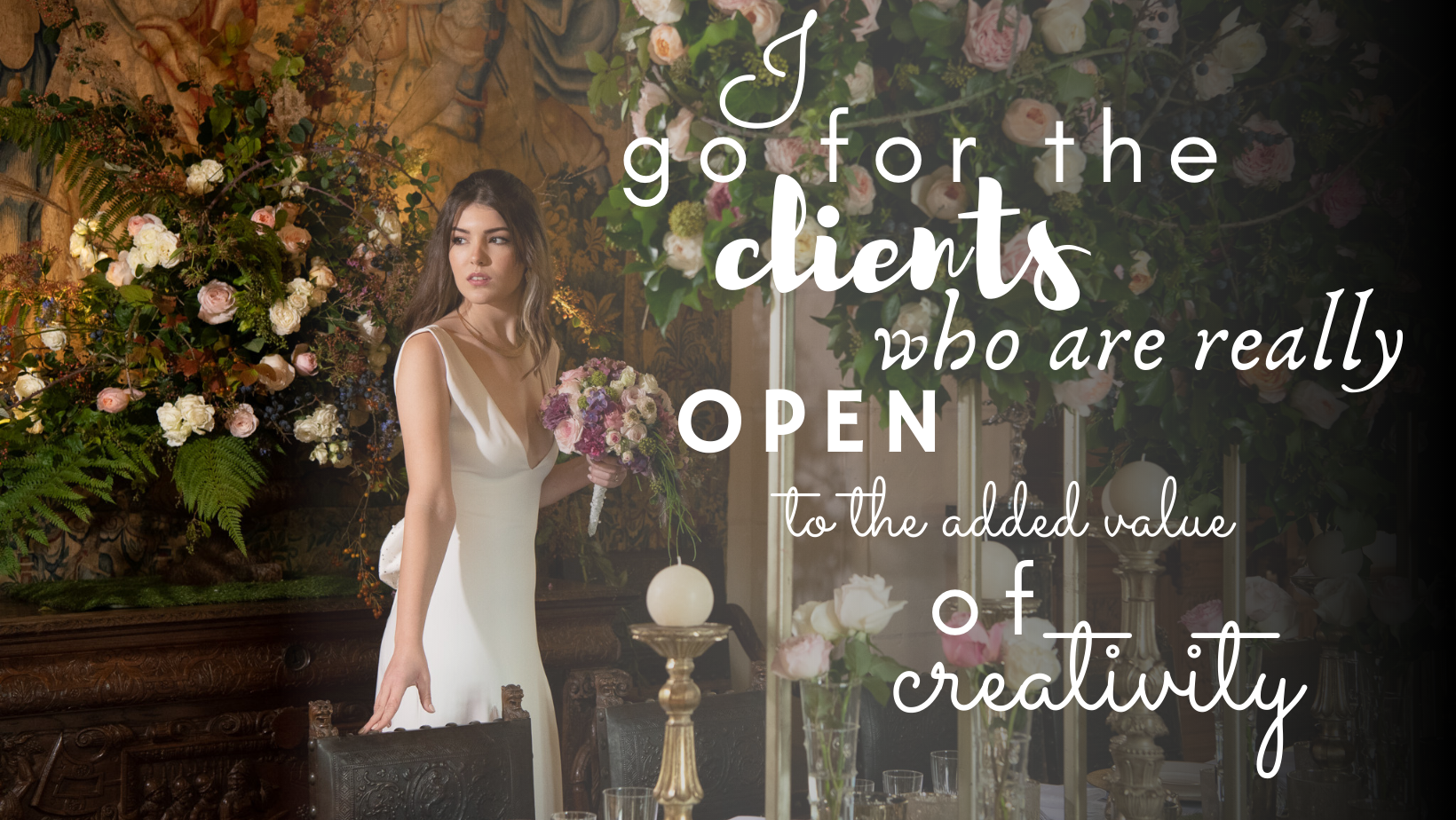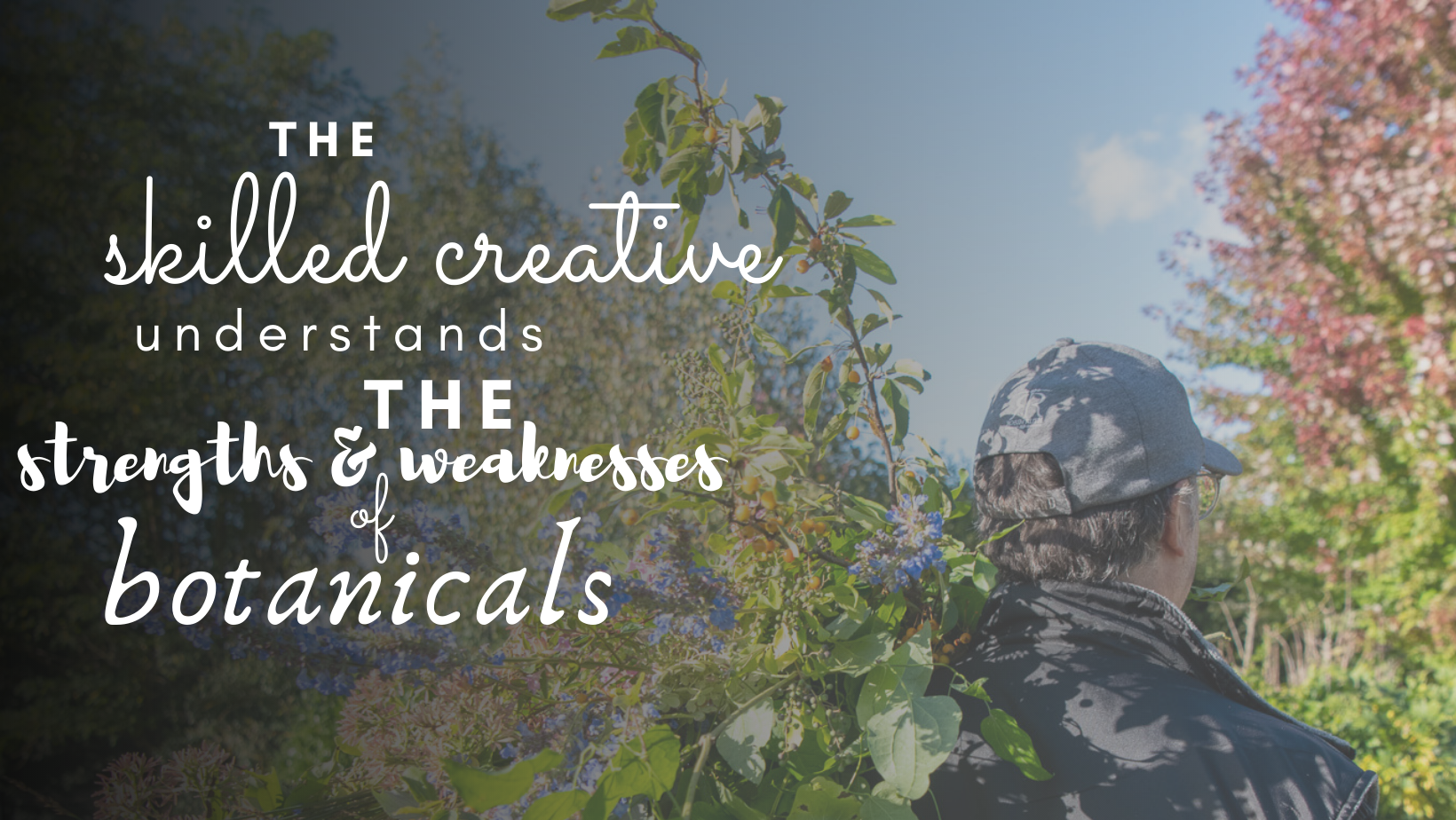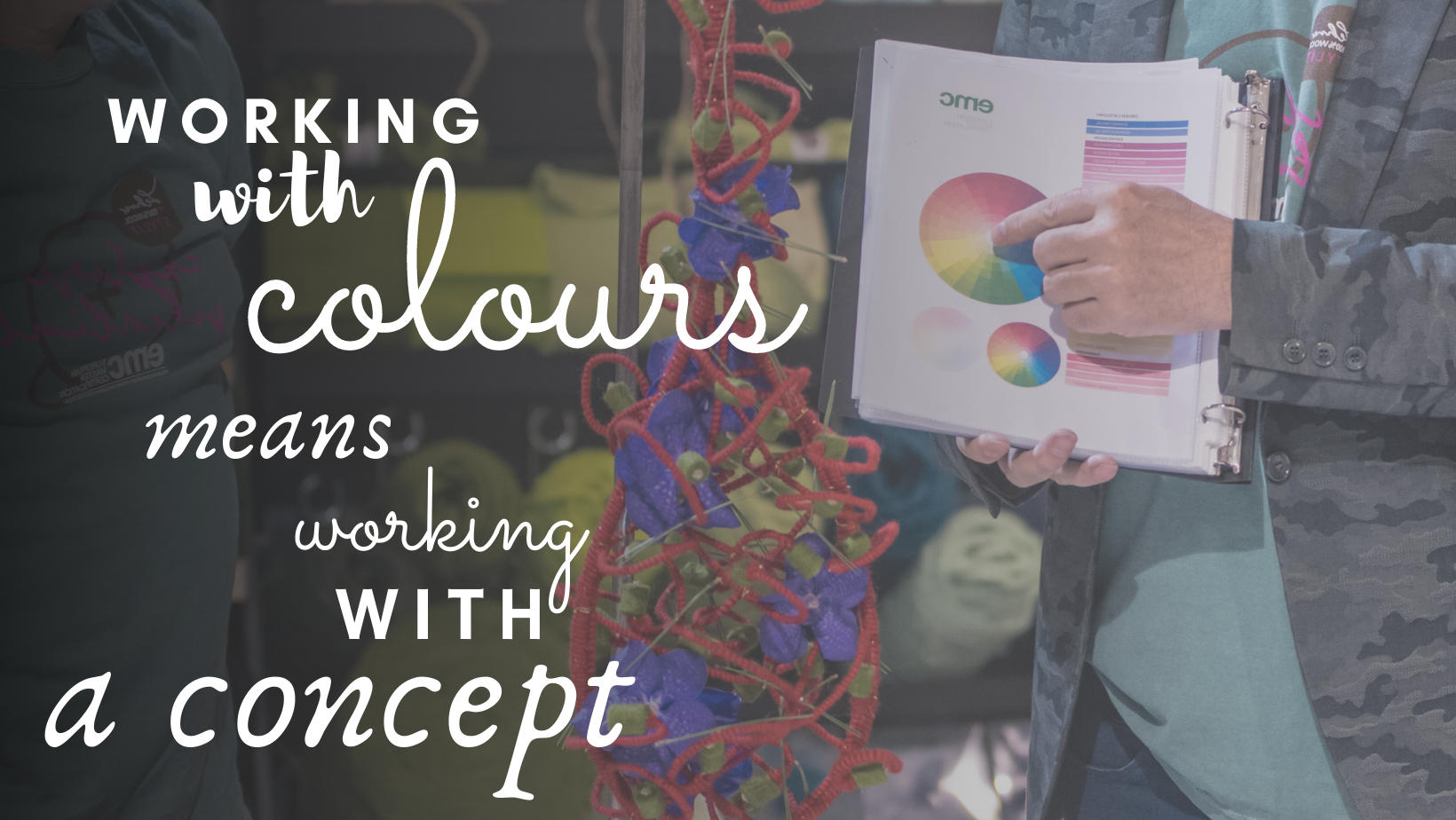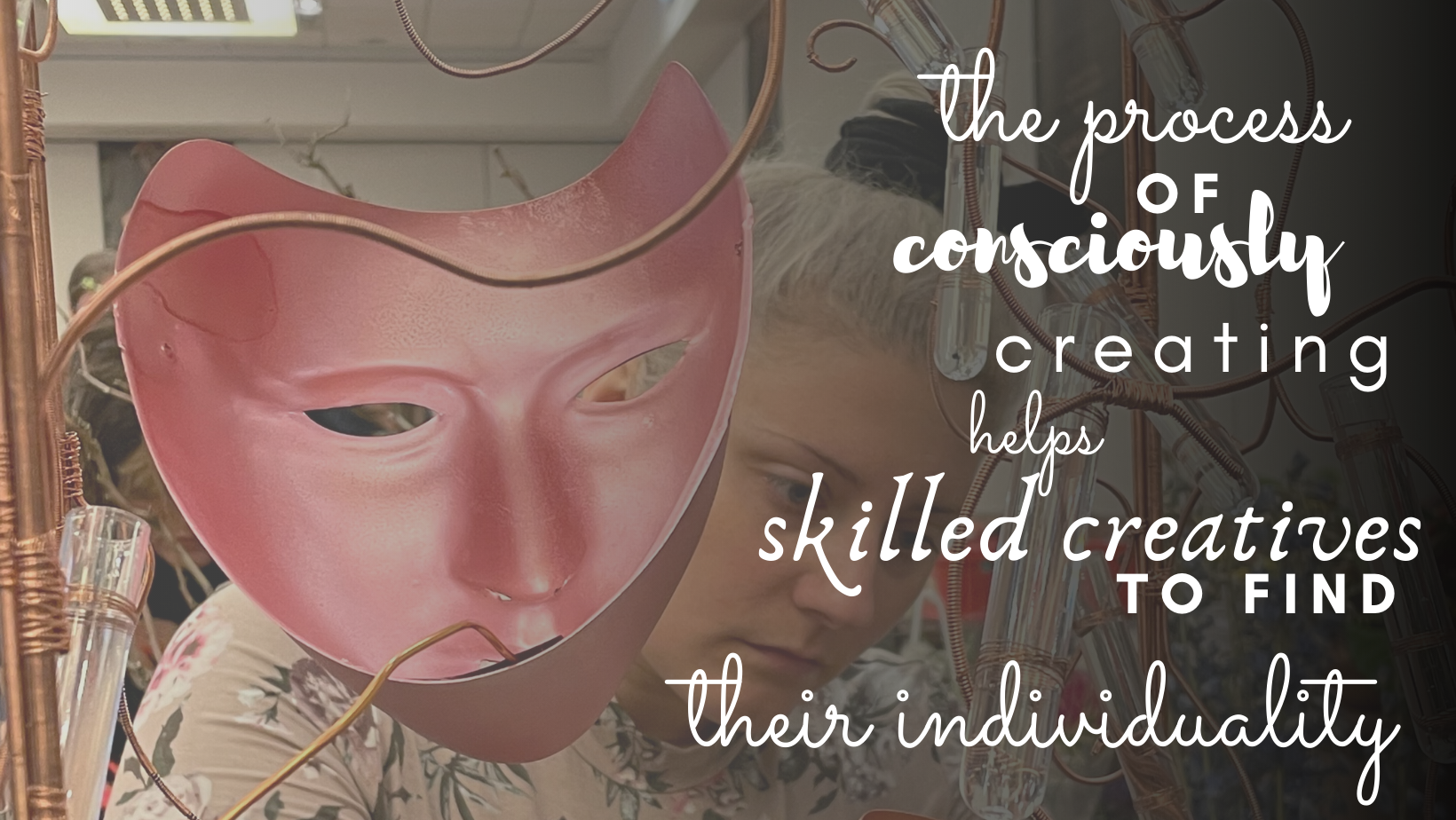Let's talk about the Skilled Creative
Jul 25, 2022At the edge of creative infinity
Lecture by Tomas De Bruyne, lead instructor at EMC
When it comes to creativity, the skilled creative starts to move the needle from the unconscious to the conscious. They start to realise that life is not about finding out what they already know, but more about discovering what they don't know. With creativity in general, they start to know there is more in life than we already know. Again, I am speaking from my own experience because the more I started to know, the more I realise I really have a lot to learn. It's natural for any learning process. Aristotle famously wrote, "The more you know, the more you realise you don't know"
We are now in the stage of the skilled creative, the stage of ‘taking off'. That's a whole different state of mind because you have been in the ‘success stage’ form and it makes sense that you now ‘take off’. You start to grow rapidly as a creative. You will have to make decisions if you want to manage or continue being creative in your business. If you want to manage your business well, you have to choose to put yourself a bit in the background and you will be less creative, or maybe focus your creativity towards other areas than the floral design in itself. This is something that you have to decide. Do you want to delegate, or do you want to stay in a fairly small business? Or maybe you do not want to have one of those big businesses, serving many clients and working with many employees, as you just want to grow as a person, as a creative. There are a lot of questions you will have to ask yourself when being at this stage. Being a skilled creative, you are faced with the decisions that guide your future, you're in the right moment to choose the path you want to walk on from here on.
When it comes to my personal experience, I found the perfect moment when I had to choose and make those decisions. And the decision making is very personal, nobody can choose for you. I cannot advise you to do this and do that, because we are so different, but I can tell you what I did; and it really worked for me. I made the choice to be small, to stay small, not going for that big manager function because I wanted to focus on creativity.

Creativity is so important to me. It's my life. It's my passion. I have made the choice to serve a very small niche of clientele, and I have chosen to surround myself with the best people, the best quality people. I feel happy with that, I do not need or want to have a hundred people around me. If I only have like ten or twenty people, to work with, I am happy. They give me the joy to work. I take quality before quantity; and that is not only in my way of working or in my mind and my designs, but also in the way I execute and create the designs. It is also the way that I choose my clients. I go for clients that are really open to the added value of creativity. The added value is the purpose of my art. I'm reaching out to the assistants that I know are the people that I can bring on my side, on location. They are there quality wise and really good at what they do. I select my partners really carefully. I don't working with everybody who crosses my path. The focus for me is on choosing the right partners, fitting the right values, and fitting the right jobs, for the right clients.
When you design it's starts well, it's with a specific purpose, you have a specific focus on an outcome matching, not what you desire, but the needs of your clients. You do a shift from designing a little bit for yourself, what you like and with what you feel comfortable with. You are changing to considering what your client would like. You put yourself in the place of the client you are designing for or considering how somebody would actually design something for you. You think, what should I do? I would say you start to think about how to communicate, and not only communicate, but you also start to think about the words, it becomes communication, potential interaction. You start to work with those words because they become a part of your design process and you value the importance of these words. You know that they will affect your outcome for the best. You can say well, what is communication? What is potential? What is interaction? We use communication to understand that you can add a message and charge your design with an emotional factor. You do not just make the design; you charge it with a message. We add emotions, value, and potential.

You should realise that every element has an added value and that knowing how to implement those different elements, means finding the best fit with your concept. You start by understanding the sense of strength of that element. You have to be able to combine it, or why would you use it? Is it because it lifts the colours, the designs, the atmosphere, or whatever it is that you are looking for, to strengthen the unity within the design? Then we look at the last point which is the interaction allowing you to go further into the potential. It is being aware of how you start to combine all those different elements. They can lift everything in such a way that you create more visual impact, more beauty. While you do not connect them, but you begin to merge them, each one is still an individual. They become a group and they lift each other up to a higher level. This is what I want to see. I have to say that I remember when I was in that stage of the skilled creatives; I received more invitations as people started to invite me because I had something to share; not only arrangements, but I could tell them how I made something, and, also, I started to explain why I did something. They might ask why I had added a piece of Jasmine vine, and I explained why I did it. I was not saying, because it's pretty. I want to create tension. I want to create tension in a decorative way, and they might want to add some kind of natural product to it. I am working with contrast. I was explaining a little bit more about the details and how they fitted in. At that point I started to shift from being an expert to being more like a master. They started to realise that when you understand something better than somebody else, you can start to communicate better and more deeply. I discovered those insights during my four stages when other people haven’t discovered them yet! That made me so different. That made me so in demand as a demonstrator. So let us now go forward and look the different elements.
These are the five elements that I always go over in each stage from the novice, to the everyday designer, to the creative designer and now to the skilled creative.
Elements and Principles of Design
The only, yet very important change is, well, they see the design and they know how it works. They start implementing the elements and principles of design. Most probably, the skilled designer researched this notion or went for some form of education. We can clearly see that as the designs a skilled creative puts out demonstrate obvious the elements of growth. The better you speak a language, the better you can communicate. It's all about that. If you really can speak a language, you become a poet. You start talking using beautiful words and you can touch the heart of the person who reads. What we do with flowers is exactly the same.

Only the conscious creative is doing this, and although we talk about a conscious creative, we are talking about a seamless way of implementing elements and principles because the conscious practice in time settles in and a certain level of understanding has developed. The consciousness becomes unconscious and part of the the designer's own self, own nature. Actually, with a skilled creative, the work is done very consciously. And experimenting and working consciously the language of Elements and Principles of Design is key.
Nomenclature
The skilled creative is mastering the care and handling of botanicals. He or she can refer to botanicals using their latin names and understands why they are placed in families, as it makes sense to place them in categories according their physical qualities, needs and habitats. This means , the skilled creative understands the physical potential. the strength or weaknesses of the flowers when using them in their designs. He or she has the knowledge of the individual possibilities, of the elements of colour, form, texture and the individual impact of each botanical. however, the skilled creative is still missing the knowing of their full potential when combining them with other botanicals. That is a feature of the next stage, the conscious creative, which fully understand each botanical into depth, at each level.
A conscious creative sees the overall impact of the sum of all different botanicals and even go further by achieving Gestalt through the outcome, by letting the botanicals interact with each other, while a skilled creative is still in the stage of just combining botanicals. The focus is there and that is a a sign they are on the right path.

Techniques and mechanics
Skilled creatives use the techniques that they have learned, for their beneficial purpose for the design and yes, they have learned many techniques in time. We have many possible mechanics, but we're going to take the one that suits the design the best. In the everyday designer phase, even creative designer, you start to know that you can very easily choose a technique and a mechanic, knowing you have fifty or more in your repertoire. You have to make an arrangement, and you are able to go quickly to a technique or mechanic, because a skilled creative is definitely going to make a design using the one that is most suitable for it. He or she says, 'I know many techniques and those techniques and mechanics can inspire me because there is potential there. There is the potential to create something new.' They are not only inspired by designs, what they see, or whatever they get inspired by, but also from their own techniques, and their own mechanics. Isn't that cool?
Also, the conscious approach to design the skilled creative exercises on a daily basis makes it easy to spot out how techniques and mechanics are used. If they do use sources of inspiration that are designed by others, they don't try to copy a certain look of that design, but rather see the way techniques, mechanics and botanicals have been used together. They analyse the approach and figure out their own method of picking up elements of inspiration and giving them a twist. It's a process of finding their own individuality in design. The skilled designer is on its way to find a signature style and searching for a way to showcase it is top of the list for them.
Colour
The skilled creative has learned to use the colour for visual impact and uses the colours more at their potential. It has to create an added value otherwise he is not using that colour. Novice and everyday designers see that colours are just colours. As a skilled creative starts to know, colours are not just colours, working with colours means working with a concept. If you match them together, you create a totally different kind of feeling because colour has emotions. Colour has the strongest visual impact! If you use one colour, you create a visual impact and an emotional mood for the public. If you add another colour, what happens as you merge them together, and they are very close to each other, you call it ton sur ton. It's really close. It doesn't change a lot. But if you go for a contrast, like red and green or yellow and blue, whatever you have created is immense, a totally different mood. Working with colours is very interesting, but you have to know how to do it, because if you want to work with green, for instance, I can create a green and red design. If you add 50% quantity-wise, neither red or green will be stronger than the other, they have the same visual impact. If you work for instance, with yellow and blue, you have to know that visually yellow has a stronger impact, so you go for 30% yellow and 70% blue. Then the yellow and the blue are in the same balance, neither is dominant. A skilled creative knows this way of thinking, so colour becomes a very interesting element in design.

Emotions
The emotions are an integral part, shifting from designs to expressions. And that's why within EMC for instance, we have a curriculum that deals with precisely this. The first thing we say in the foundation class, is that we're going to move the focus from the floral designs and floral creations to floral expressions. What's the difference between floral arrangements and expressions? A flower arrangement is what you make, you put the flowers together and it's beautiful; a floral expression is exactly the same, but you consciously add some emotions to it. In the early days we could make floral arrangements, but times are changing, and we have to go with people wanting floral expressions. They see so many things now. If you lived in a small shop in a small town, or a small city 20 - 30 years ago, and you have only two or three shops in that city, everything was doable, and you could limit your activity to only making arrangements or selling flowers as a product. But nowadays people go online, people see things, people know how to talk about things. Knowledge is everywhere. You cannot say, ‘I can't get the knowledge’. This is something that we cannot afford to believe in anymore since the arrival of the internet.
Back to the emotion, which is getting really important. It's a whole new role opening up. Flowers are all about emotions. You are able to start to communicate, start to talk with your clientele, to express their expectations. What happens here is that you also start to expand your community. As I have said before, the community is really important because the community welcomes your communication, and, through your peers, you get information.
There's a saying that you are ‘a product of the seven people that you are surrounded by’, so your friends are actually making a difference. They are making you. If you are merged into a community that is ambitious and creative driven, you will be part of that community, you will be part of that energy. They are going to push you and you are going to look forward to this. Here, these skilled creatives are not staying in their own little shops, they go beyond those four walls, and they open their eyes to different communities. As a skilled creative, if you start to build a good reputation as a designer, people start to recognise you and people start to respect you for who you are as a designer. You realise that the effort you give is part of the journey to get a firm, creative life. Because you know, creativity is an action. You like doing it and you enjoy seeing others succeed, as well. You surround yourself with those people and you are surrounding yourself with people who are a joy, but who also look up to you, push you and help you.

You start to feel comfortable and use your creative voice to articulate your creative strengths.
That happens when you are in the stage of the skilled creative, and maybe you start to think of joining a competition. Why? Because you want to stretch your boundaries. You want to feel how it is. And you know what? There is a big chance you are going to end up in the top five. We see it with our students when they go to competitions, and they do it. I don't want to go too far with this one here, but just to say that we use a certain system that they use in competitions. We explain it and we go into ideas; we go into the colour composition, we are going to value the techniques, but that's not the world. I just wanted to show you that there is so much to discover. What you actually do in this phase is you start to unleash your creative potential. Earlier, we were talking about you unlocking the potential, and now it is unlocked, so now we can actually unleash it. Isn't that cool? Of course, you cannot unleash it if there is not enough, so you have to go through that process, and sometimes you have to go through the process to feel okay with pushing yourself beyond where you are already. If you are a good, skilled creative, you feel comfortable to give yourself the fair feedback when you are not happy with your results. You say to yourself, 'I have got to try to do better. It's not good'.
Let's talk about your clientele. They see you that you understand the art of communication and you can translate their wishes. You can translate their expectations with your skills; through your medium, through your flowers, and the beauty of them. As you start to talk with your clients in a creative way, you are not talking to, or at your client. That's a whole different statement if you start with your client, you feel you're simply tied. You have a compassionate way; you know what the client wants. You can put yourself in the shoes of your client, and then you can translate it. And yes, maybe it's easy to do that, but how do you translate that to the language of the elements and principles of design. A skilled creative starts to know that, and this is what they should focus on. We focus on how to translate, how to communicate, how to see potential and how to interact with your elements. That added value that you create through your skills is recognised by people, and you know, the beauty of it is they're more and more willing to pay for it. They are willing to pay for your passion. Like I said, you are taking off. People are willing to put some money on the table because they resonate with the emotions you transmit.

I do get that the market is getting smaller, and you have to work in this niche. I do get that, but this also means that your work shifts from quantity to quality. And in fact, you can actually monetize your skills better. You are able to balance your life better between work and personal life by doing well, it's up to you. I don't know how ambitious you are. Of course, we can grow and grow and grow. Before we continue, I would like to ask you some questions. I'm telling you all this from my own experience. Do you feel that you want to move forward? Does it make sense to you? I'm telling you my story. I am sharing with you my mistakes, my challenges, my expectations, but also my desires that I had in the past. Still, that was my journey to go from one stage to the next. I had the same feelings. If I was in one stage, how do I move to the other stages. I knew that I had to go forward, because if I was always doing the same things, I couldn't move forward in my business. I had to learn the process of creating. I had learned how to clean flowers and how to make a simple arrangement. Now I really wanted to learn how to put the flowers in such a way that I create added value, and make people love to come to me. Other people would say I was different because I wanted to grow but, if you don't, you will never get to the next level. Believe me, if you don't change your way of thinking, you will remain stuck in the level you are in at this moment. Again, it's up to you. It's your call.
If you want to break out, you will need to actually do something!
lecture by Tomas De Bruyne
edited by Sara Marie Andrews, EMC and Diana Toma, EMC
Don't miss a beat!
New blogs, course offerings and what we are up to delivered to your inbox!
We hate SPAM. We will never sell your information, for any reason.

